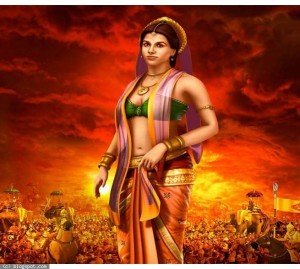Nageshwar Jyotirlinga - Lord Shiva
Nageshwar Jyotirlinga is an important temple of Lord Shiva near Dwarka. Here, Lord Krishna Himself used to worship and perform Rudrabhishekam. The Rudra Samhita sloka refers to Nageshwar with the phrase Daarukaavane Naagesham. This shloka is also the source about the controversy of the location of this temple.
Nageshwar Temple
Controversy about the location
At present there is debate on the actual location of the legendary forest of Darukavana, so identifying the Jyotirlinga of Nageswaram remains difficult. Since there are no other important clues in the text as to the location of the Jyotirlinga , 'Darukavana' remains the vital, and only, clue.
The written name of Darukavana could be misread as 'Dwarakavana' which would lead us to the Nageswara temple at Dwarka. In fact there is no forest in this part of Dwarka that finds mention in any of the Indian epics. In the narratives of Shri Krishna, we find mention of Somanatha and adjoining Prabhasa tirtha, but never is there any mention of Nageshwara or Darukavana in Dwarka or thereabouts.
Dwarka - A unique distinctive city from mythological point of view
Nevertheless, Dwaraka has a great distinction in Indian mythology. It is one of the Sapta-puris or seven holy towns- Ayodhya, Mathura, Haridwar, Kashi, Ujjain, Kanchipuram and Dwarka; and one of the four Dhamas or holy places Rameshvaram, Puri, Badrinath and Dwarka.
Story behind the Nageshwar Jyotirlinga
There is a popular legend, related to Nageshwar Jyotirlinga. According to the legend, there was a businessman with an immeasurable faith in god and karma . He was highly devoted to Lord Shiva.Despite being busy in his business and work, whatever spare time he used to get, he exhausted it in praying, adoring, and serving Lord Shiva. Seeing his devotion in Lord Shiva, a monster named Daruka got angry .Being a monster in nature, he was never in favour of Lord Shiva and infact hated him.
That demon, always looked for an opportunity, to disrupt merchant's devotion . One day that merchant was going in a boat for some business purpose. The monster saw this, and with the found opportunity he attacked the merchant's boat and took all the travellers to the capital and imprisoned them.
Even in the prison, the merchant use to pray Lord Shiva constantly. When the demon, got to know about about it, he got aggressive and visited the merchant in prison,in the spirit of anger.The merchant was meditating at that time .The monster, started to resent at the merchant in that state only. When the demon saw, that his resentment is not affecting the merchant at all, he instructed his slaves to kill the merchant. Even this instruction could not act as a barrier to his meditation. The merchant kept on praying for his and his fellow people's liberation. Lord Shiva was pleased with this devotion, and appeared in the prison in the form of Jyotirlinga and gave Pashupata, a weapon to the merchant, to protect himself.. He killed Rakshas Darukk, and his disciples from the weapon given by Lord Shiva. Since then this Jyoitirlinga is established there, and was named Nageshwar.
Interesting story of why the temple faces south
Nageshwar Mahadev Shivalingam is facing South while the Gomugam is facing east. There is a story for this position. A devotee by name Naamdev was singing bhajans in front of the Lord. Other devotees asked him to stand aside and not hide the Lord.
To this Naamdev asked them to suggest one direction in which the Lord does not exist, so that he can stand there. The enraged devotees carried him and left him on the southside.
To their astonishment, they found that the Linga was now facing South with the Gomugam facing east.
Aurangzeb wanted to destroy this temple
Aurangzeb, the notorious Mughal emperor, wanted to destroy this Hindu temple. When he tried, thousands of bees came out of the temple and attacked Aurangzeb and his army. He left the demolition work midway and went away. The devotees rebuild the broken temple.
Speciality of this temple
Another specialty of this Shivalinga is that unlike the other Shivalingas, which are made of black stone and look like a neat pillar rounded off at the top, this one is made of a stone known popularly as Dwaraka Shila, which has small chakras on it. The shape of the linga is more or less like a oval 3 mukhi Rudraksha.
Nageshwar Jyotirlinga




















